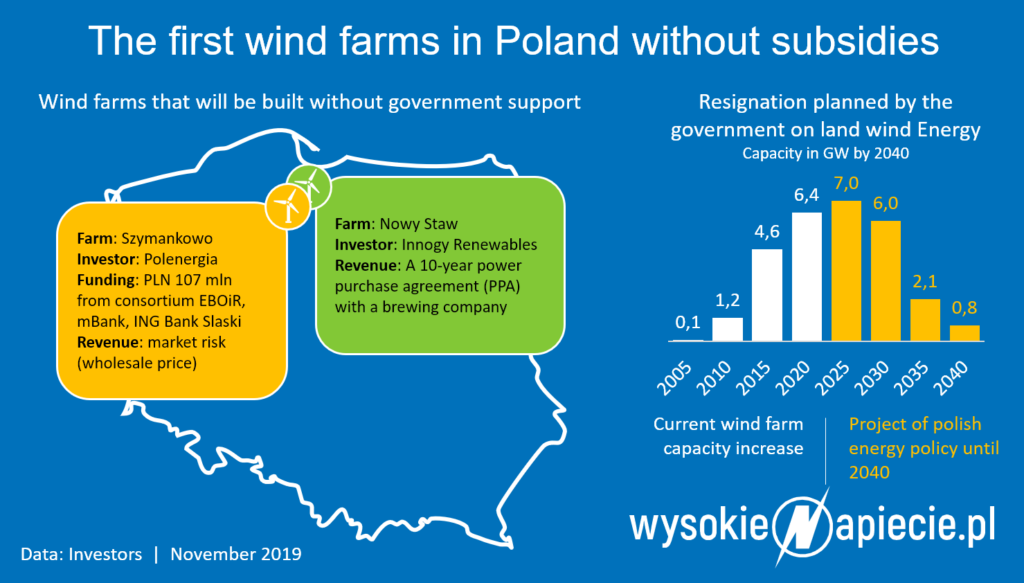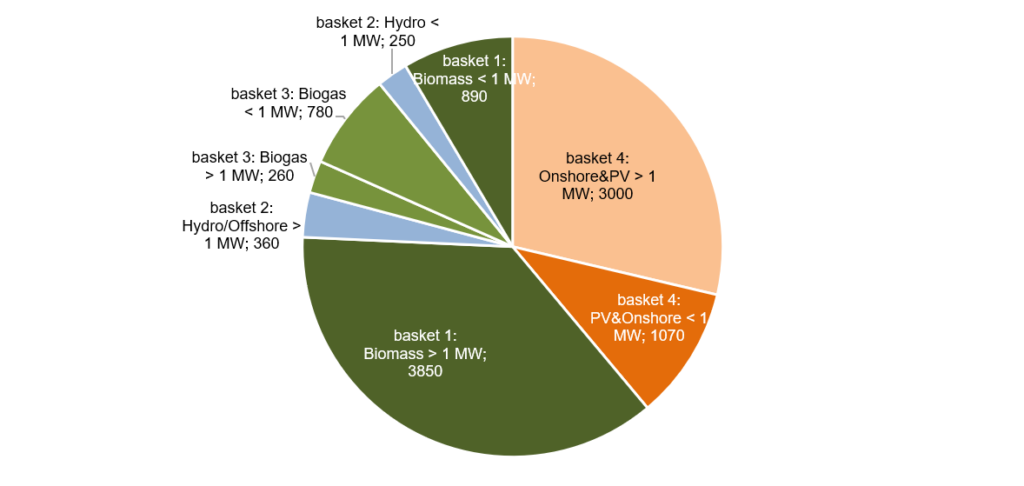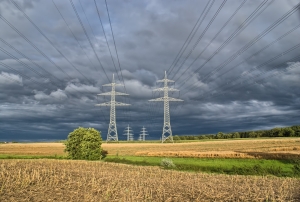Spis treści
“The earth is important to all. The climate connects,” says the poster that Barbara Sińczuk holds in her hand. Like many others, she came to the Plac Unii Lubelskiej in the south of Warsaw’s city centre on the 11th of November. Sińczuk is also committed to the environment outside the demonstration. In her district in Poland’s capital she fought against smog and helped the Green Party in its election campaign.
The real occasion for the demonstration on November 11th is not climate protection however, it‘ s the Polish Independance day. Here, at the “Antifacist demonstration”, there is a “green block” this year – organized by Obóz dla klimatu, the group that also organized the first two Polish climate camps.
The first wind farms in Poland without subsidies
Aleksandra Czerniawska was also part of the Green Block. The 35-year-old psychologist has been involved with the group “Earth Strike” for over a year. The movement organized four strikes this year, the largest of which, the international strike on 27 September, was attended by 7,500 people in Warsaw, according to the organizers.
“The Polish climate movement is getting stronger. A year ago, there was hardly anything”, says Czerniawska. She sees the 1.5-degree report of the Intergovernmental Panel on Climate Change published in October last year as one of the triggers. “After the IPCC report, all the movements just bloomed. Earth Strike, Fridays for Future, Extinction Rebellion, all kind of started at the same time.”
Already before that, in the summer of 2018, the first Polish climate camp had taken place near the small town of Konin close to Poznań. There are several open pit lignite mines in the area.
This was followed by protests from the Fridays for Future movement this year – which in Poland calls itself the “Youth Climate Strike”. The first major global climate strike of the movement took place in Warsaw in March of this year. According to a census by scientists from the Institute for Protest and Movement Research, 6,700 people took part in the demonstration. There were also protests in many other Polish cities. And they are getting more and more.
During the global climate strike on 20 September, scientists in Warsaw counted 12,000 people. According to the activists themselves, there were 15,000 protesters in Warsaw – and 33,000 in 71 cities throughout Poland.
But do the messages of the young activists also reach the general public? “It is very hard to capture the support for the climate movement by standard opinion polls,” says environmental psychologist Adrian Wójcik of the University of Toruń. “The movement is dominated by young people, who make up only a small part of the sample.” Nevertheless, Wójcik agrees that climate protests of the size seen in September were unprecedented in Poland.
Analysis of the draft amendment to the Renewable Energy Sources Act
However, there are some signs that awareness for climate change is increasing – and not only among young Poles. In a survey commissioned by the daily newspaper Rzeczpospolita in August, in which people were able to choose from several topics to play a role in the parliamentary elections in October, climate protection came in second with 64 percent, just after health. In a further survey in September it even came in first.
“As a non-governmental organization, we long had the feeling that people did not internalize the issue of climate change,” says Oskar Kulik, who is responsible for climate and energy at WWF Poland. “That has now changed.”
Kulik sees various reasons for this development. “Organizing the World Climate Summit in Katowice was a good idea. This has awakened interest in climate protection.” Another important reason was the severe drought in the summer of 2018, which also caused high crop losses in agriculture in Poland.
Jakub Gogolewski is also feeling the change. His organization “For Development – Against Opencast Mines” has been helping local protest groups for eight years to defend themselves against new opencast lignite mines. “There is now new energy in the movement,” says Gogolewski. His organization now gets a lot of support from the new groups.
Draft RES Act amendment boosts onshore wind farms and large PV
“At the same time a lot of the local people we are supporting do not oppose the mines because of the climate,” he says. The people are mainly concerned about water quality, agriculture or simply want to protect their villages. “The climate movement is still very much centered in the cities”, says Gogolewski. “We are all the time looking for a common language”.
And politics? After all, the ruling party has well recognized that it can no longer get away with coal alone. In the summer of this year, the PiS adopted a program to promote photo voltaic systems, there are also tenders for solar and wind energy and offshore wind farms are being planned.
Finally, the government has announced this fall that the Ministry of Energy is to be divided into various other areas – including the creation of a Climate Ministry headed by the former Climate Summit President Michał Kurtyka.
However, this renaming cannot hide the fact that in 2018 almost 80 percent of Poland’s electricity still came from coal – renewable energies accounted for almost 13 percent. The current draft for energy policy up to 2040 also stipulates that coal should still account for 56 to 60 percent in ten years.
“I have hope, but I am far from satisfied,” says Oskar Kulik of the WWF. “We still need a lot of discussion about phasing out coal – and also about how we can reduce emissions from transport.”
75% capacity thresholds – do we really know what we are doing?
Earth strike activist Czerniawska also has hope: “That we now have a ministry of climate does not mean very much yet – but the government cannot escape the discussion anymore.” Earth Strike activists are already preparing their next action for next year and Fridays for Future Poland will be back on the streets at the next global strike tomorrow in various cities in Poland.
Friederike Meier is German freelance journalist. She was intern in WysokieNapiecie.pl in November 2019. In Germany she published i.a. for climanews.de. From January 2020 she works for “Frankfurter Rundschau”.
















